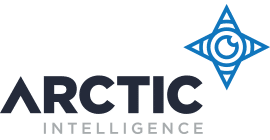WHAT IS
Enterprise risk management?
Enterprise risk management refers to the process of identifying, assessing, and managing the various risks that an organisation might face in its operations. Enterprise risk management focuses on four main risk areas; strategic risks, financial risks, operational risks and regulatory risks.
WHAT IS
Enterprise risk?
Enterprise risk management (ERM) is strategically important because it enables organisations to navigate a complex and rapidly changing business landscape with confidence and resilience. By systematically identifying, assessing, and mitigating risks, ERM empowers decision-makers to make informed choices that balance potential threats and opportunities, ensuring that strategic objectives are achieved while minimising potential setbacks. ERM enhances stakeholder confidence, safeguards reputation, and contributes to long-term sustainability by fostering a culture of risk-aware decision-making, enabling organisations to thrive in an environment where uncertainty is a constant factor, ultimately leading to competitive advantage and operational excellence.
WHAT IS
Enterprise risk management?
ERM refers to the process of identifying, assessing, and managing the various risks that an organisation might face in its operations. This includes both internal and external risks that could impact the achievement of the organisation's objectives. ERM involves establishing a framework to systematically analyse and prioritise risks, implement mitigation strategies, and monitor their effectiveness. The goal of ERM is to enhance an organisation's ability to make informed decisions that balance potential risks and rewards while safeguarding its long-term sustainability.
WHAT BENEFITS COME FROM AN
Enterprise risk assessment?
An enterprise risk assessment is typically conducted by the senior leadership, risk management professionals, and relevant stakeholders within an organisation and delivers a number of significant organisational benefits including but not limited to:
Download our Enterprise Risk Fact Sheet
Strategic risks
Financial risks
Business viability risk
Climate risk
Commercial risk
Corporate transaction risk
Geographic risk
IP protection risk
Key human resource risk
Leadership risk
Partnership risk
Product and market fit risk
Product viability risk
Reputational risk
Resource risk
Investor risk
Access to capital risk
Bad debtor risk
Cash management risk
Commodity risk
Currency risk
Debt financing risk
Enterprise valuation risk
Financial liability risk
Financial management risk
Financial viability risk
Funding risk
Interest rate risk
Liquid asset risk
Loan repayment risk
Revenue management risk
Tax event risk
Operational risks
Regulatory risks
Business operations risk
Business outsourcing risk
Culture risk
Distribution risk
Employee risk
Environment risk
Human error risk
Employee/industrial relations risk
Information security (cyber) risk
Information technology risk
Intellectual property risk
Employee retention risk
Leadership risk
Legal risk
OH&S risk
Project execution risk
Record keeping risk
Supply chain risk
Bad weather event risk
Bribery and corruption risk
Fraudulent activity risk
Illicit trafficking risk
Money laundering and terrorism financing risk
Sanctions risk
Strategic risks
Business viability risk
Climate risk
Commercial risk
Corporate transaction risk
Geographic risk
IP protection risk
Key human resource risk
Leadership risk
Partnership risk
Product and market fit risk
Product viability risk
Reputational risk
Resource risk
Investor risk
Financial risks
Access to capital risk
Bad debtor risk
Cash management risk
Commodity risk
Currency risk
Debt financing risk
Enterprise valuation risk
Financial liability risk
Financial management risk
Financial viability risk
Funding risk
Interest rate risk
Liquid asset risk
Loan repayment risk
Revenue management risk
Tax event risk
Operational risks
Business operations risk
Business outsourcing risk
Culture risk
Distribution risk
Employee risk
Environment risk
Human error risk
Employee/industrial relations risk
Information security (cyber) risk
Information technology risk
Intellectual property risk
Employee retention risk
Leadership risk
Legal risk
OH&S risk
Project execution risk
Record keeping risk
Supply chain risk
Bad weather event risk
Regulatory risks
Bribery and corruption risk
Fraudulent activity risk
Illicit trafficking risk
Money laundering and terrorism financing risk
Sanctions risk
Download our Enterprise Risk and Control Module Brochure
Click on the button to download the Enterprise Risk and Control Module Brochure
COMPLETE THE FORM
Access the Content Module Overview
The content module overview provides an introduction to Enterprise risk management (ERM) and outlines the necessity and methods for its implementation.
Additionally, it presents the Arctic Intelligence Risk Assessment Platform, highlighting its potential advantages for your business.
Request your free copy now!

